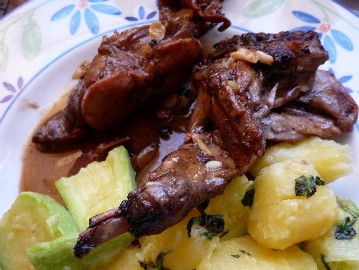Facts About Maltese cuisine
Maltese cuisine offers a delightful reflection of the country's rich history, showcasing a blend of Italian, Spanish, French, Provençal, British, and other Mediterranean culinary traditions. Positioned along key trade routes and influenced by various foreign powers that ruled the islands, Maltese cuisine has always been receptive to outside flavors. One of the most cherished dishes is the traditional Maltese stewed rabbit, often hailed as the national dish.
Malta's culinary heritage has been shaped by its geography and diverse cultural interactions. Italian, Middle Eastern, and Arabic foods have left a significant mark, while the Knights of St. John and the British also made lasting contributions. For instance, the Knights introduced aljotta, a fish broth similar to bouillabaisse, and the British brought items like English mustard and Worcestershire sauce into the Maltese kitchen.
The island’s cuisine is deeply intertwined with its identity. Dishes like stuffat tal-fenek (rabbit stew) carry historical significance, possibly as symbolic resistance to hunting restrictions imposed by the Knights. Pork dishes might have served as a way to distinguish Maltese cuisine from the Muslim culinary traditions in the region. The use of pork and British ingredients underscores the cultural complexities within Maltese cooking.
Regional and seasonal variations add even more depth to Maltese culinary traditions. Gozo, a region of Malta, boasts its own unique dishes such as Gozitan cheeselets and ftira Għawdxija. Seasonal desserts like prinjolata and figolla are enjoyed at specific times of the year, while Lent influences the consumption of dishes like lampuki and bebbux. Traditional sweets like qagħaq tal-għasel carry symbolic meanings and are savored during particular periods.
